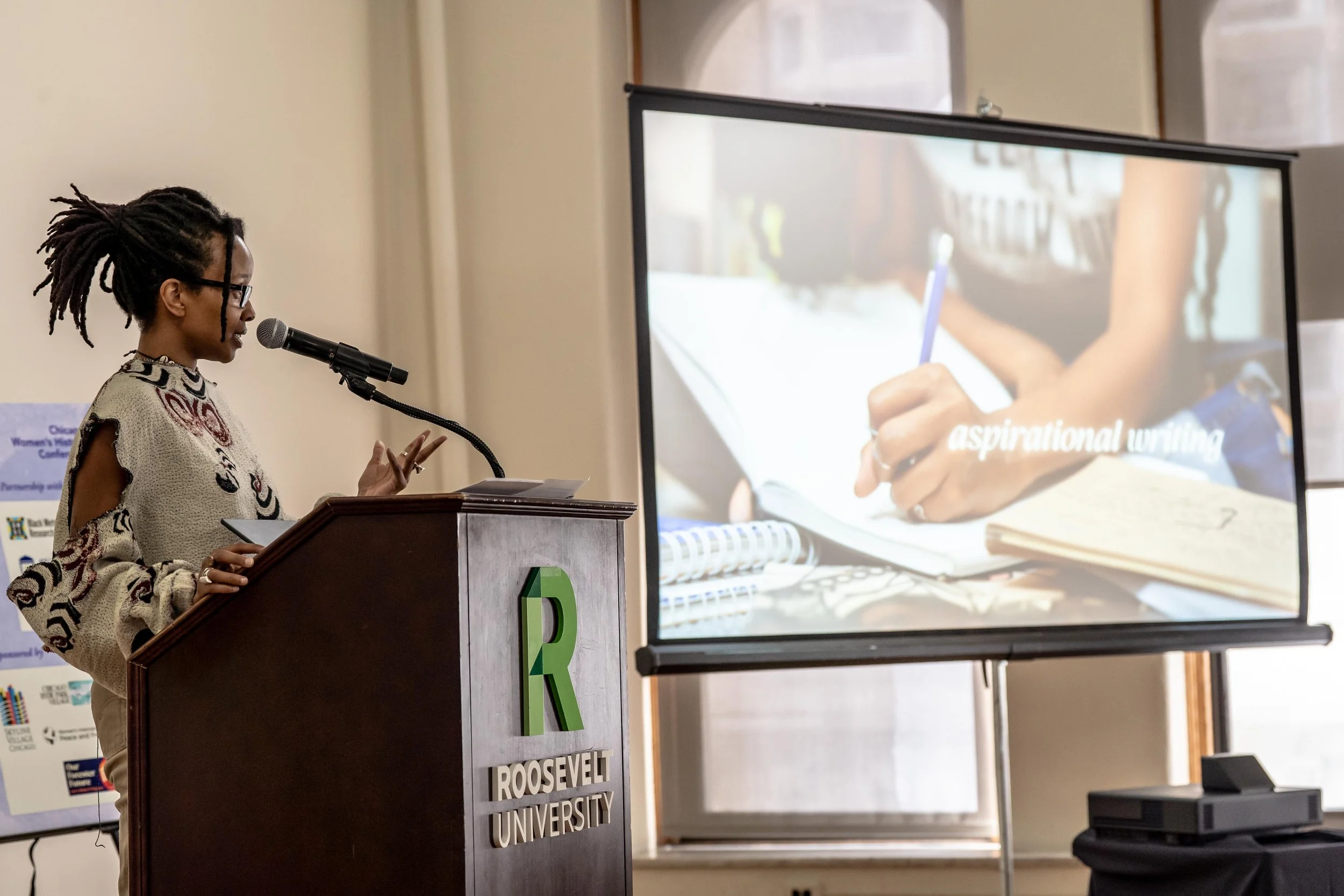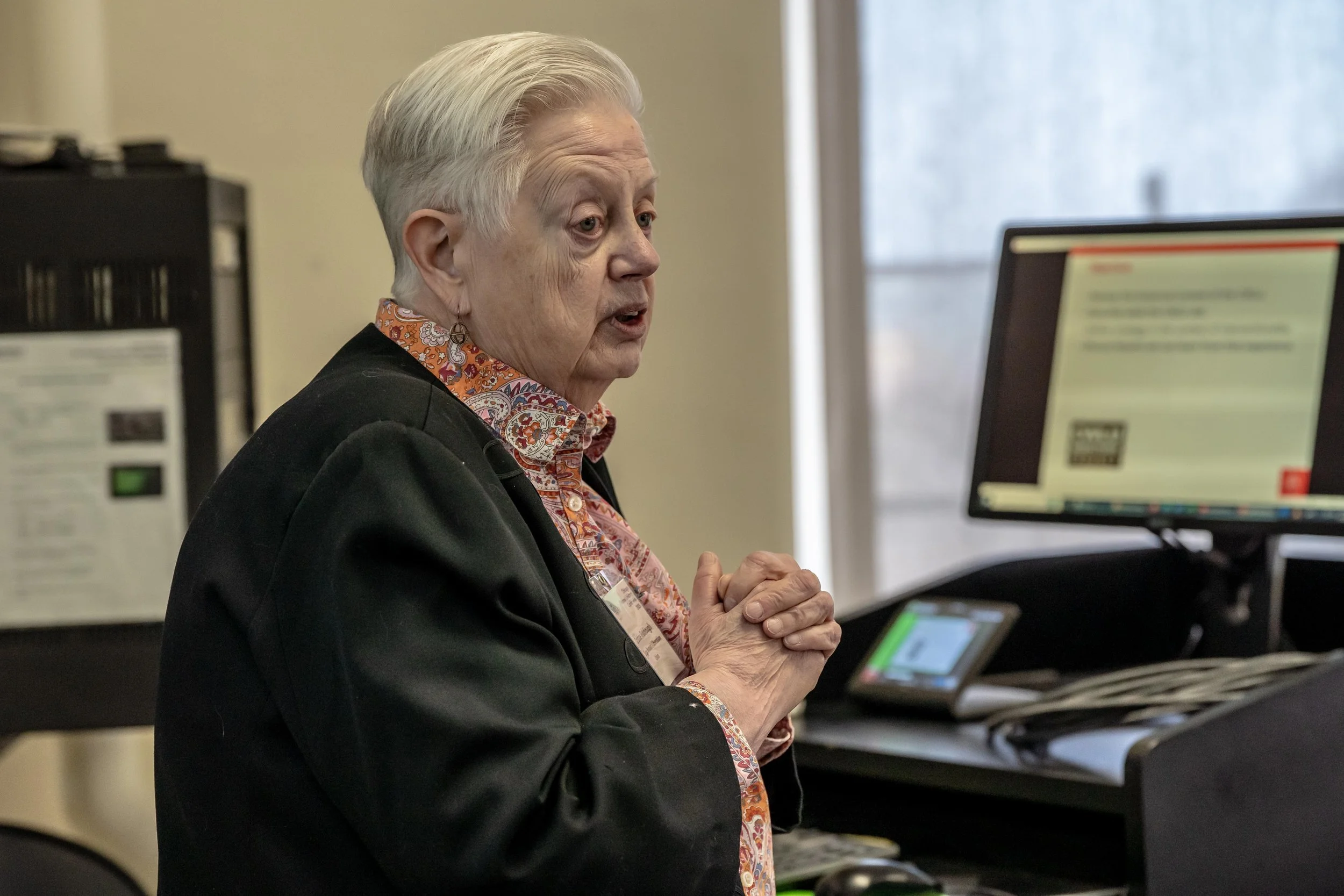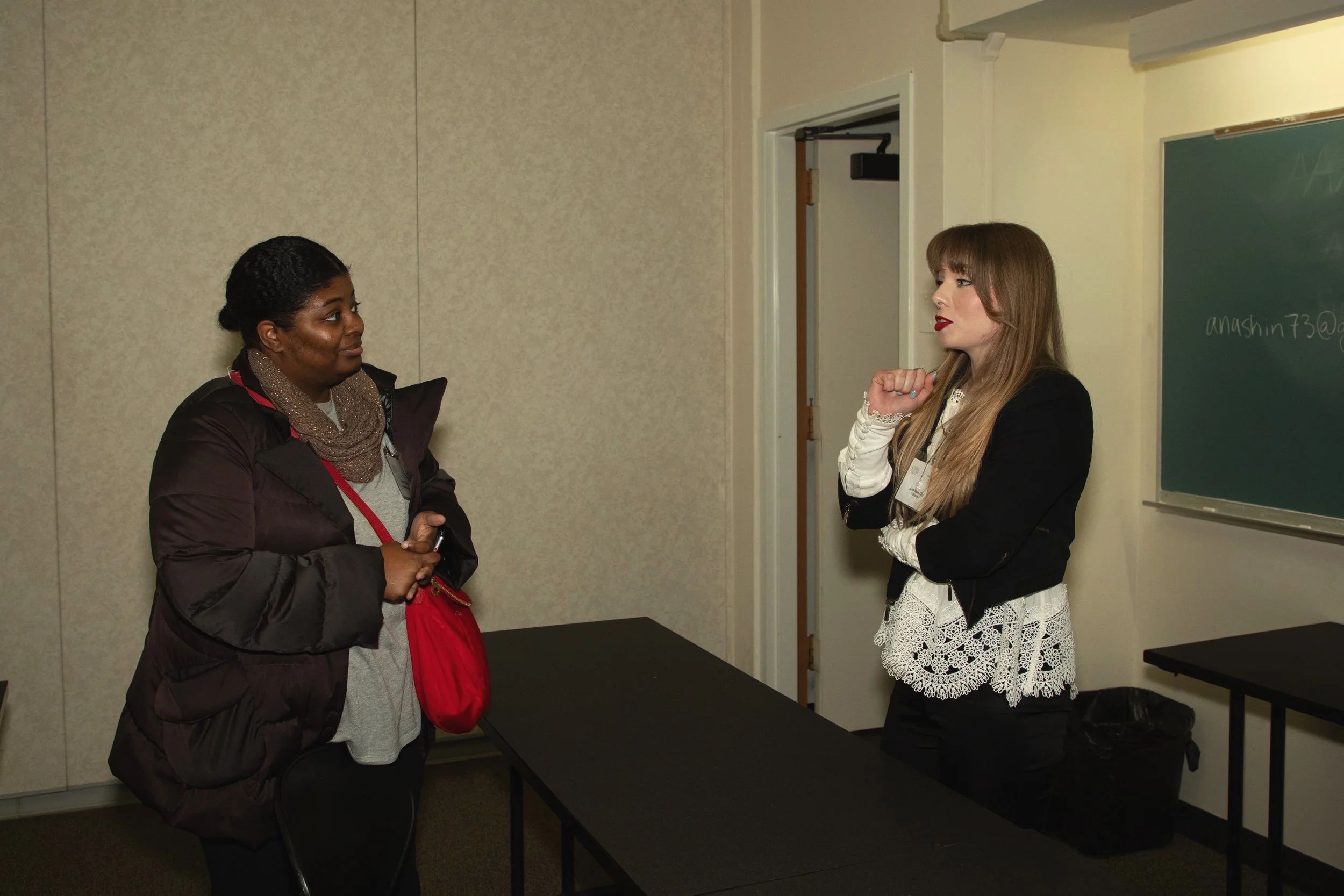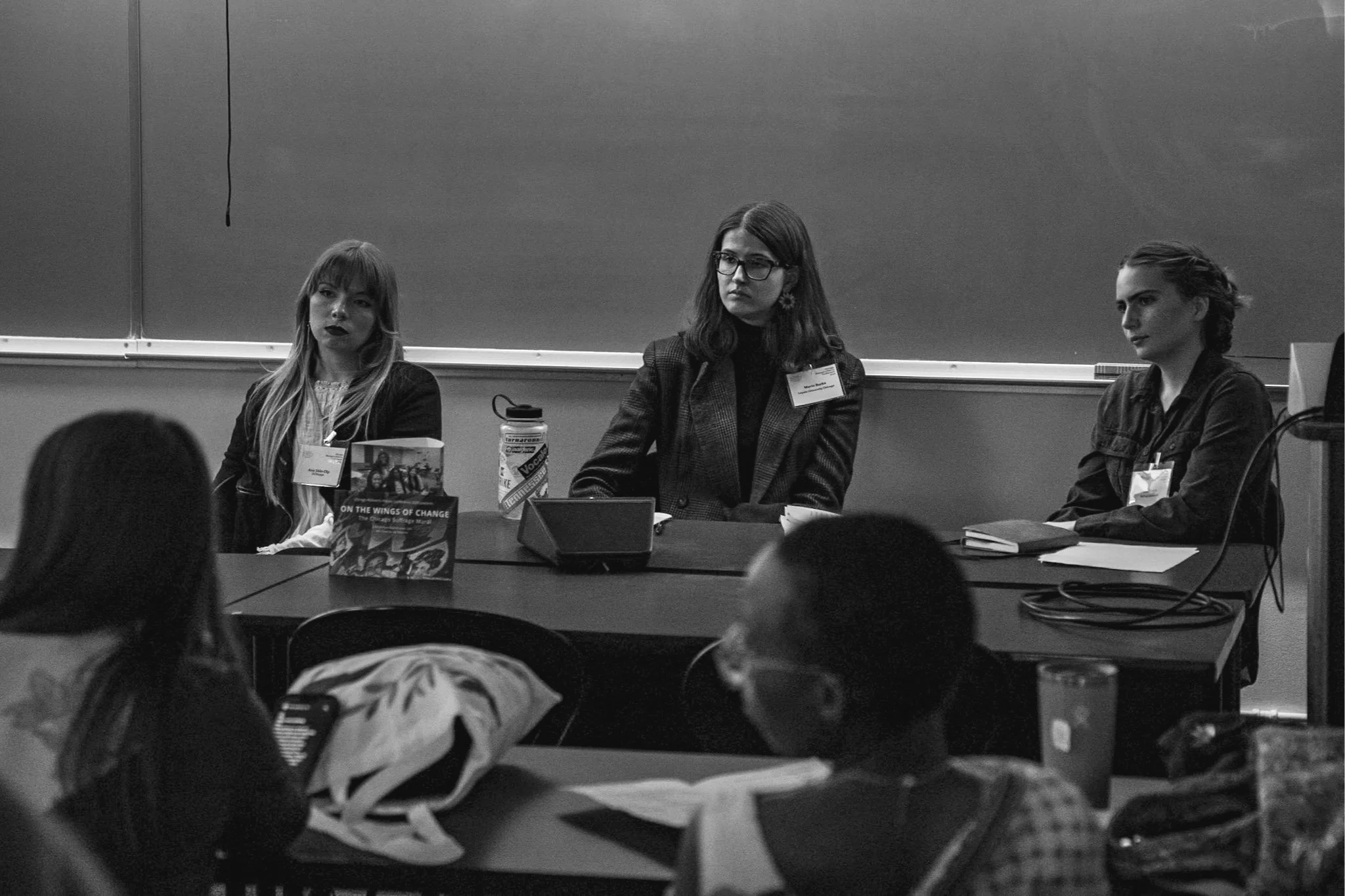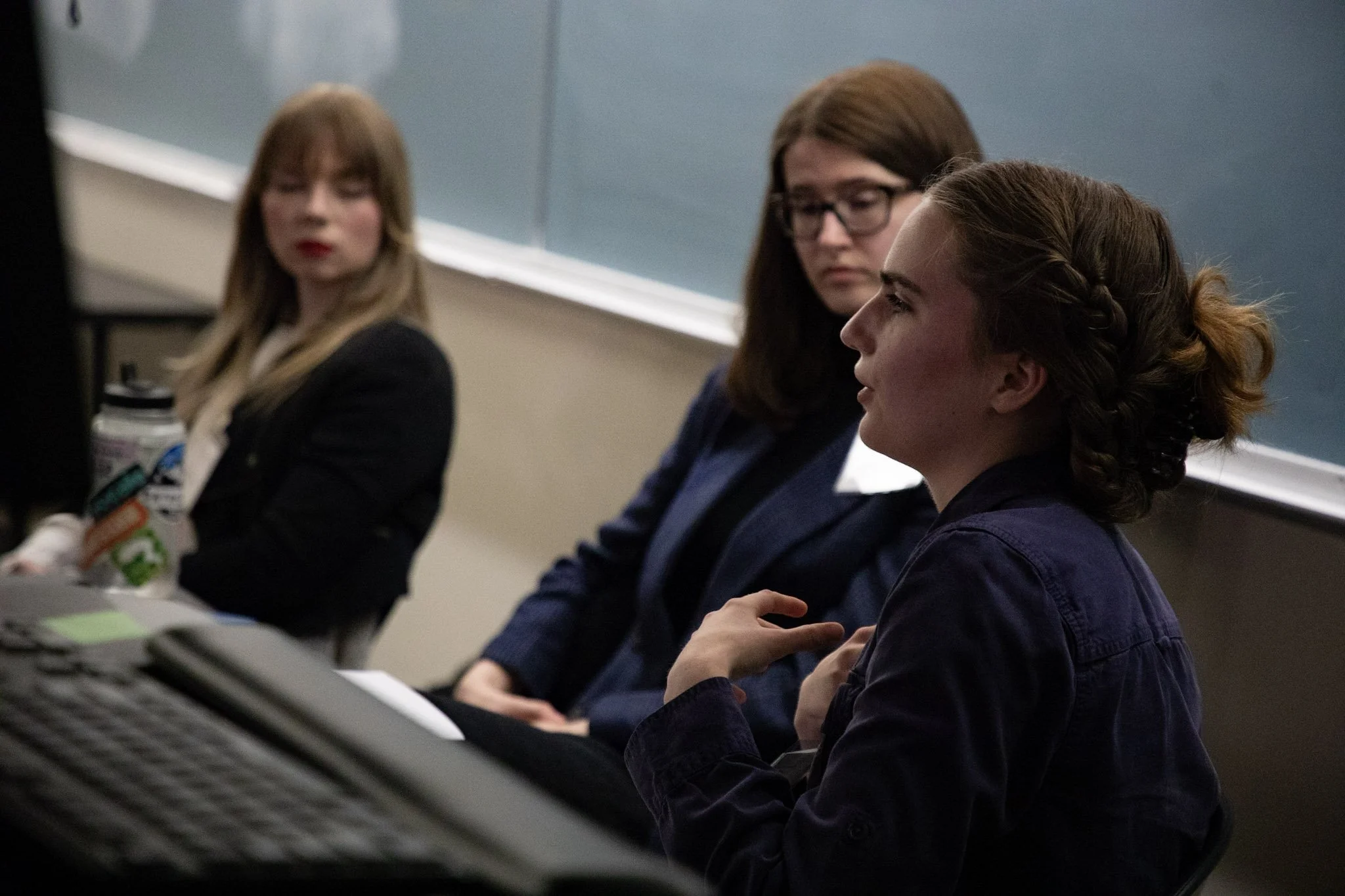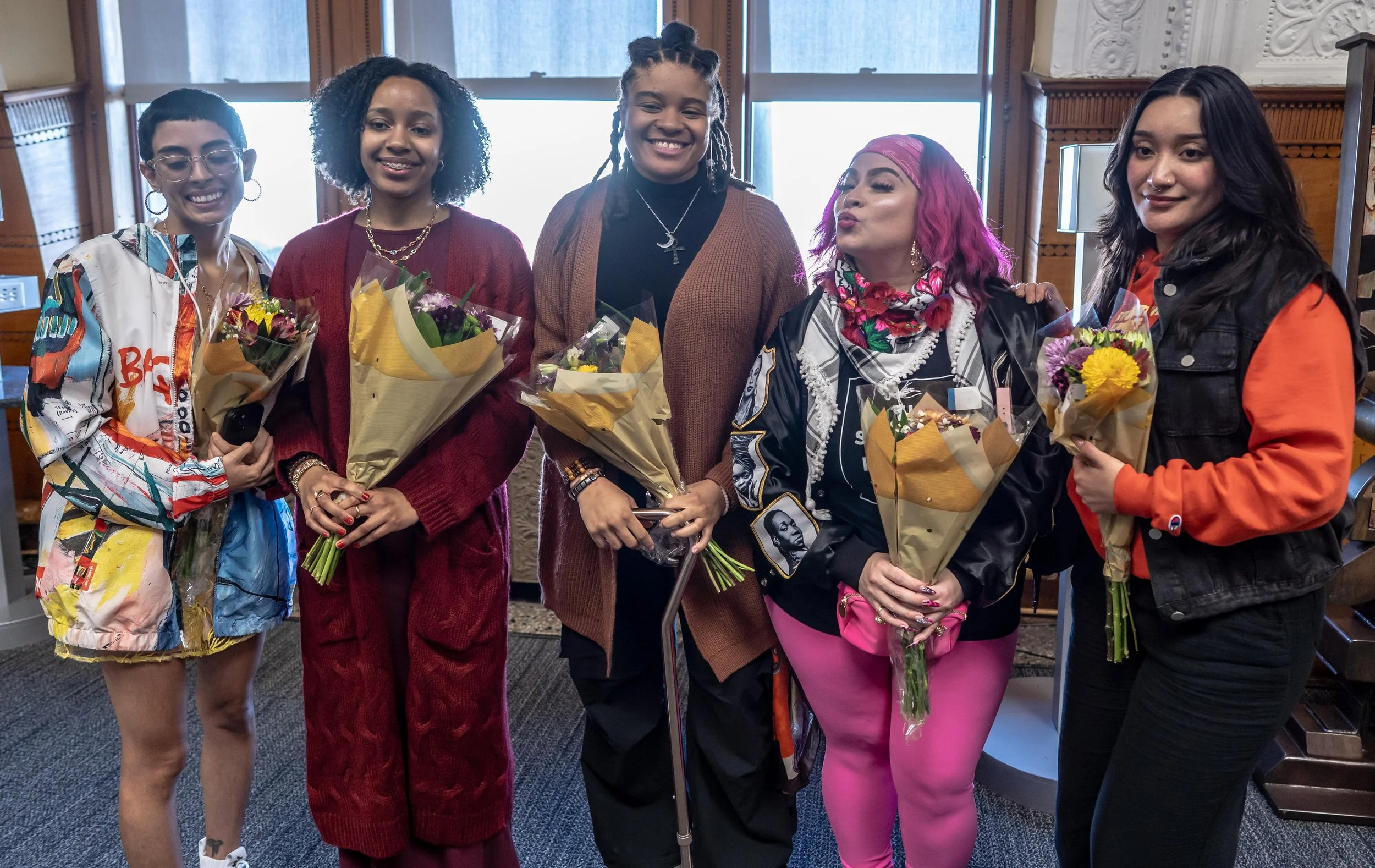Ella Grace on Chicago Women’s History Conference, 2025
Keynote Speaker, Jamila Woods at Chicago Women’s History Conference, 2025, Photo credit: Ronit Bezalel
The First Cracks in the Wall, But Not the Last Lights to Pour Through
An Inspiring Day at the Chicago Women's History Conference
by Ella Grace
On Saturday, March 22, I had the pleasure of presenting some of my research on jazz and gender at the Chicago Women’s History Conference. Aside from my own presentation, I got to take in several other fascinating presentations, packed in from 9:00 in the morning until 6:00 at night.
Hosted at Roosevelt University by the Chicago Women’s History Center in partnership with the Black Metropolis Research Consortium, the conference was titled Past and Present Strategies to Advance the Rights of Women. The day began shortly after 9:00 am in the aptly-named Ida B. Wells Hall with some opening remarks and keynote speaker Jamila Woods, a poet and singer from the South Side of Chicago. I have been a long-time listener of Jamila’s music so I was particularly excited to hear her speak. She opened with a beautiful poem before telling us all about her creative process and purpose and how poetry and lyrics have become an emotional outlet for her. Her teaching experience showed when she gave us prompts to discuss with our neighbors, keeping us engaged and energized and facilitating new introductions. She had us think of people we admire and aspire to be like and what specific traits we are drawn to incorporating in ourselves. Woods spoke about developing a vocal injury that made it hard to sing and how she used somatic healing to overcome it. She explained how the things we practice, good or bad, become habits that we embody and invited us to think about negative practices we would like to give up and positive practices we would like to move towards. She then told us about three practices she is moving towards inspired by three historic women.
Keynote Speaker: Jamila Woods
Photo credit Chase Hartman
First she spoke about Mariame Kaba, an American activist, author, and educator who advocates for the abolition of the prison industrial complex. From Kaba, Woods focused on the quote “hope is a discipline,” and proceeded to sing a song she wrote inspired by Kaba called “Blk Girl Soldier.” Next she moved to Vandana Shiva, an Indian scholar, environmental activist, food sovereignty advocate, ecofeminist and anti-globalization author. I recognized Shiva from reading her book Soil Not Oil in high school. Woods latched onto the message of that phrase, elaborating that connecting and reconnecting with the Earth is a means of resistance against fascism, colonialism, and capitalism. She sang a song she wrote about climate justice called “Teach Me.” Jamilla finished with Ida B. Wells, a particularly potent choice as the namesake of the hall we sat in. Oldest of the three, Ida B. Wells was an investigative journalist known for exposing the horrors of lynching and fighting for racial and gender justice. From Wells Woods focused on truth-telling as a radical act of resistance. Woods continues to ask herself “Am I telling the truth with what I’m making?” Bookending the keynote speech with poetry, Woods closed with her poem “Ode to Ida B. Wells.”
After Woods set a wonderful tone for the day, the morning breakout sessions began. With five equally-appealing presentations to choose from in this first session, I found myself at a workshop entitled Preserving your Family Documents. Led by professional archivist, Beth Loch, the session explored how we can preserve our matriarchal histories by properly storing, handling, organizing, and documenting artifacts including photographs, letters, books, maps, textiles, memorabilia, recipes, diaries, and oral histories. It was fascinating and I learned a lot about archival work.
After a break for lunch, the day continued with another breakout session and five more options to choose from. I wished I could have cloned myself to see them all, but I elected to attend a presentation entitled Socialist Feminism: Our Strategy for the Women’s Movement: Lessons in Organizing from the Chicago Women’s Liberation Union. The presenter, Christine Riddiough, was an older woman who was a member of the CWLU in the 1970s. She shared some of her first-hand experience with us after decades of activism and explained the methods of the CWLU. Founded in 1969, the CWLU had a three-pronged approach of direct action, education, and service. Within these umbrellas, the organization did everything from organizing protests to publishing newsletters to providing healthcare, abortion access, and childcare. There was even a CWLU rock band! The CWLU also created a Liberation School, essentially an education co-op with classes on everything from self-defense to Spanish. I noted the Liberation School slogan which really resonated with me: “What we don’t know, we must learn. What we do know, we must teach each other.”
Christine Riddiough at Chicago Women’s History Conference 2025
Photo credit Ronit Bezalel
Ironically, noise from a pro-Palestine protest outside the building filtered in throughout the presentation as Riddiough described the activism she helped organize decades ago. Riddiough did her best to ignore the chanting, honking, and shouting to deliver her presentation, but despite our eagerness to hear her, there was an unspoken understanding in the room that we were all in support of the demonstration. There was a beauty in being surrounded by dozens of like-minded women with a wide range of ages. It was particularly refreshing for me coming out of school where I was surrounded entirely by men in many of my classes. I still find myself in many all-male spaces so I savored the feminine energy radiating in every room of the conference.
Perhaps in reference to what was going on outside, Riddiough acknowledged the current political mess we are in, but she gave us a call to action, the same sentiment that started the CWLU decades ago: “Our options are: we can curl up in a ball and eat chocolate—sounds attractive at times— or we can fight.” She had that endearing blunt realism that seems to come naturally with age. Riddiough wrapped up her talk by summarizing “Lessons Learned from CWLU.” We have to see ourselves as agents of change. We need to have a vision as a basis for strategy. We have to organize and take action based on that strategy instead of just sitting around talking about it. The presentation was quite inspiring to say the least.
As it turned out, there were a few other former CWLU members in the audience, and when the floor was opened for questions, it quickly became more of a discussion than a Q&A as other women shared their experiences. One woman emphasized that perhaps the greatest thing the CWLU did was provide community for women. She recounted the power of women sharing experiences with each other and realizing that their difficulties are collective rather than individual. “We have to support each other,” she said. This is a power that I have come to recognize in the last year or so. I have had so many experiences as a woman in jazz that for a long time I thought were mostly unique to me, unrelated to my gender. As I have become a part of a larger community of women in this music, I have heard about so many similar experiences from other women. There is a gratifying personal validation that comes from this communal sharing as well as a powerful sense of solidarity and unity. More importantly, sharing our experiences also helps us realize that the issues we face are systemic, a necessary realization if we are to begin dismantling the factors stacked against us.
A younger audience member asked Riddiough if there were times when she felt afraid and if so, how she overcame it. She responded, “There were times when I was afraid, but I’m more afraid now than I was then.” As far as how to overcome it, she simply said, “You got to be bold.”
Tam Johnson and Ana Shin-Olp at Arts and Activism panel
Photo credit Essence Richardson
During the final breakout session of the day, I presented my own research as part of a panel on “Arts and Activism” alongside two other academics. I really enjoyed getting to hear about their work as well. First, fashion historian Ana Shin-Olp told us about women’s clothing as a means of resistance from the mid 1800s to early 1900s. She explained that prior to this time, women’s clothing was a symbol of submission. During the suffrage movement, Bloomerism became the first attempt at dress reform. However, suffragettes found that their bloomers garnered so much backlash, that they distracted from other more important causes, so they stopped dressing provocatively, to bring the focus back to their primary issues. Next came the Rational Dress Movement, a casting off of corsets in favor of looser, healthier, clothing that allowed for more freedom of movement. Finally, Ana told us about the Hobble Skirt. In contrast to the Rational Dress Movement, the Hobble Skirt was long and so narrow that it significantly restricted women’s movement to the point of being dangerous. Ana discouraged us from jumping to negative conclusions despite the skirts’ restriction, arguing that it was a means of sexual liberation for women of the age.
The Hobble Skirt died out around WWI, no longer practical with civilian workforce mobilization, which coincidentally, was the time period of the next presentation. Marin Burke taught us about quilting for the American Red Cross during WWI. She emphasized that quilting is an important part of women’s heritage, and that during the war it was a means of connection, hope, processing grief and loss, and fostering community. Burke called quilting “a subtle activism,” not to diminish its value, but to reflect how the power in quilting was realizing the significance of the work women were already doing.
Ana Shin-Olp, Marin Burke and Ella Grace, Art and Activism panel at Chicago Women’s History Conference 2025
Photo credit Essence Richardson
In my presentation, I attempted to shift from thinking only about art as a tool for activism to highlighting the need for activism directed at the art industry. I provided a brief history of jazz and explained how women have been systematically excluded from participating in this music. I then talked about current solutions being applied to further gender equity in jazz and also emphasized the value of quantitative data and academic research like my thesis for making the arts more equitable.
Ella Grace talking in the foreground at Chicago Women’s History Conference, 2025
Photo credit Essence Richardson
We responded to some very thoughtful questions from the audience before heading to the final plenary session at 5:00pm. Bookending the conference with spoken word art and music, Chicago-based Puerto Rican rapper Pinqy Ring introduced four of her mentees to perform original works. First was Yesi Oasis, a multidisciplinary artist who blends poetry, photography, graphic design, and mixed media. She read an amazing poem she wrote about the conference. Next, writer and poet Ms. Mamas delivered an exceptional spoken word piece with masterful wordplay. Then, poet Adilene performed a poem entitled “A Letter to my Feminine.” Finally, Anisa performed Chaka Khan’s “I’m Every Woman” on flute.
Anisa performing I’m Every Woman by Chaka Kahn with Pinqy Ring chiming in with audience.
Photo credit Chase Hartman
In addition to introducing each artist, Pinqy Ring provided some interactive spoken interludes, hyping us up and guiding us through multiple mini-meditations with positive affirmations. She got us to be more participatory, shouting things like “Raise your hand if you’ve had to swallow your truth to survive!” Most hands in the room shot up. “Let your truth breathe!” she shouted. Pinqy Ring helped us “unblock our throat chakra,” echoing a phrase from Wood’s keynote speech that morning.
After her mentee’s performances, Pinqy Ring performed two of her own works. First, a spoken word piece she wrote on International Women’s Day last year entitled “Me Too.” A line that stood out to me in the piece was “womanhood doesn’t define you, you define womanhood.” Then, she performed a rap mostly in English with a section in Spanish as well.
To close it all out, they performed a piece together that they had co-written in the last hour or so based on their experiences at the conference that day. Throughout the day, they had noticed, as I had, how intergenerational the attendees and speakers were. There were older women, middle-aged women, and college-aged women like myself, and yet, Pinqy noted, “How is it that we’re all still the first [woman] to do something? Why is that still happening?” This idea became the basis for their final piece and they weaved in familiar phrases from other presenters to convey the message. To say it was powerful would be an understatement. A line from Pinqy really brought it all home for me: “I am the first crack in the wall, but I will not be the last light to pour through.”
Yesi Oasis, Anisa, Ms Mamas, Pinqy Ring and Adilene, The Plenary Performers at Chicago Women’s History Conference, 2025
by Ella Grace

